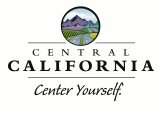
california central valley edc
888-998-2345
661-366-0756
Email: look@centralcalifornia.org
Solar Surges Past Wind, Hydro as California’s No. 1 Renewable Energy Source
Posted 1/11/2016 by Pete DankoSolar Surges Past Wind, Hydro as California’s No. 1 Renewable Energy Source
By Pete Danko
JANUARY 11, 2016
In just a few short years, solar power has gotten big in California, and now it’s at the top of the renewable energy heap.
Data compiled from daily reports by the state’s major grid manager indicate that in 2015, solar became the No. 1 source of renewable energy in California. Not only did solar beat wind power for the first time, but it also topped drought-depleted hydropower, the long-standing leader in California electricity generation outside fossil fuels and nuclear.
The California Independent System Operator doesn’t cover the entire state, but it does manage about 80 percent of the California grid, including those portions served by PG&E, Southern California Edison and San Diego Gas & Electric, the state’s three big investor-owned utilities.
Every day, CAISO reports on the hourly electrical output from a long list of sources for the electricity used by 30 million Californians, ranging from biogas at the low end of generation to thermal — natural gas, essentially — at the high end.
The reports in sum show that in 2015, utility-scale solar power plants produced 15,591,964 megawatt-hours of electricity for CAISO. That’s 6.7 percent of the system’s total of 231,965,326 MWh. Wind came in at 5.3 percent. Hydro contributed 5.9 percent, with the portion that the state considers renewable, “small hydro,” at 0.6 percent of generation.
Power generated from large solar installations has overtaken wind-power generation in California.
Power generated from large solar installations has overtaken wind-power generation in California.
That’s a vastly changed picture from just a few years ago. As recently as 2012, solar accounted for just 0.9 percent of CAISO generation, less than one-quarter of the 4 percent share that wind had at the time. (Hydro, with the drought beginning to unfold, produced 9.3 percent of the system’s energy that year.)
And here’s the kicker: These figures undercount solar’s true contribution. CAISO’s solar data are derived only from big plants that sell their power at the wholesale level. The agency’s numbers don’t include the ubiquitous small systems installed throughout the state.
Variously labeled rooftop, distributed or behind-the-meter solar, there are hundreds of thousands of small installations on California homes and businesses, and their output adds up. Experts estimate that including these systems would boost solar’s tally by nearly half — meaning solar in all its sizes, shapes and forms probably accounted for close to 10 percent of California’s electricity in 2015.
A Benefit During Drought
One payoff from all the solar: Despite the big drop in hydropower due to the drought, CAISO used less thermal and imported energy last year than it did in 2012. Bernadette Del Chiaro, who heads the California Solar Energy Industries Association, called that “a really interesting story that has not gotten enough play.”
Financial incentives and ever-increasing requirements through the state’s renewable portfolio standard are driving the growth of renewable energy, and solar in California has some particular advantages, Del Chiaro said.
We all know there’s a lot of sunshine here. But beyond that, Del Chiaro said, “As utilities have worked to meet their renewable energy mandates, solar has become a favorite choice because the cost of PV [photovoltaic] panels has declined so much that it is more competitive than most other forms of energy.”
That includes wind, said Mark Jacobson, a Stanford professor who has been researching and promoting scenarios for achieving 100 percent renewable energy for all purposes, not just electricity, by 2050.
“While wind costs in the national average are much lower than both solar and gas due to extremely fast Great Plains wind, they are more comparable in California,” Jacobson said in an email. “And wind has a little more siting difficulty in California.”
According to GTM Research, which tracks solar trends, utility-scale photovoltaic solar in California (including non-CAISO areas) grew from 0.8 gigawatts installed capacity at the beginning of 2013 to 6.6 GW by last October, the most recent update available. Concentrating solar — what CAISO calls “solar thermal” plants, like Ivanpah in the Mojave Desert — adds nearly another gigawatt of generating capacity.
Wind power capacity in the state inched up from 5.5 GW to 6 GW during the same period.
Nancy Rader, executive director of the California Wind Energy Association, says that’s cause for concern.
“We cannot have just solar,” Rader said. “We have to have a mix. It is clear from all the studies that have been done.”
Challenges for Wind Power Development
In an op-ed in the Sacramento Bee last November, Rader blamed wind’s meager growth on “sweeping restrictions” that “have been adopted or are slated for adoption by Los Angeles, San Diego and Solano counties in rural areas hosting some of the state’s best remaining wind resources.” Rader was also critical of a draft plan to regulate desert development that would put “80 percent of the high-quality wind resources on remote federal lands in the vast deserts of Southern California … permanently off-limits.”
The most realistic scenario for adding significant wind power in California is wiring it in from out of state, Rader said. Developers in Wyoming, which has a monstrous wind resource but practically nobody to use it, are especially keen to send wind power California’s way.
California has largely cut off new out-of-state renewables, but that could change. The Legislature last year opened the door to expanding the Independent System Operator
<-- Back

